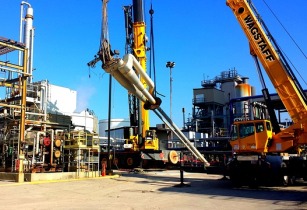A new report by Douglas Westwood (DW) has revealed that annual spending in the Middle East is expected to increase despite predictions that 2016 will see the start of a barren period for the offshore oilfield service (OFS) sector
The report predicts that a significant drop in project sanctioning brought about by the downturn, coupled with low rig day rates, will see annual expenditure average US$48.6bn over 2016-2020, 25 per cent lower than 2014’s annual total of US$65.3bn.
The recent growth in offshore drilling seen since 2010 has seen a sharp halt – offshore well spuds saw an eight per cent reduction last year and a further nine per cent is anticipated for 2016, the report said. Even in the event of a rapid recovery in oil prices, offshore activity is predicted to be suppressed as a result of final investment decisions (FIDs) for several developments in key offshore basins have been deferred – including Anadarko’s flagship Shenandoah project and Woodside’s Browse FLNG.
In the Middle East, however, annual spending is expected to increase five per cent year-on-year from US$6.6bn to US$7.4bn over 2016-2020. This will largely be as a result of the full implementation of the giant South Pars gas development as well as brownfield developments of some of the world’s largest offshore oilfields – namely Safaniya (Saudi Arabia) and Upper Zakum (United Arab Emirates).
As the offshore drilling sector is currently heavily oversupplied with units brought to market during the boom years of 2011 to 2014, despite widespread scrapping of older rigs, the DW report estimates offshore rig and crew spending will decline two per cent year-on-year over 2016-2020.
As a result of significant spending cuts in most offshore plays and the current rig oversupply, DW foresees a flat trend in offshore OFS expenditure for the decade following declines in 2015 and 2016. Even in a scenario of a rapid recovery in oil prices, it is unlikely spending will recover to 2014 levels until well into the 2020s, the report said.





